Most water filters are designed to remove a specific set of contaminants. If you want to remove as many contaminants as possible from your drinking water, you might need to invest in a filtration system with multiple water filter stages.
In this guide, we’ve shared the information you need to decide how many filter stages you need.
📌 Key Takeaways
- A three-stage filtration system is ideal for most people.
- The number of stages in a filter system, alongside the water flow rate through the filter, the filter quality and size, and the type of filter stages, all affect its performance.
- When choosing how many stages you need in a water filtration system, consider your water quality, your installation and maintenance preferences, and your available space.
Table of Contents
📊 How Many Filter Stages Is Good?
If you’re looking to buy a multi-stage water filtration system, you might have noticed that different brands and models offer a different number of filter stages.
There are single-stage filters, which use only one filter cartridge containing one media type, and multi-stage filters, which use several filter cartridges, or several filtration stages within a single filter cartridge.
How many filter stages is a good number? This is near-impossible to answer since it depends on your own preferences and requirements (see the “What to Consider” section below).
💡 Generally, three filter stages is ideal for most people.
Having at least three separate filter stages means that you can target three different sets of contaminants, which will produce cleaner, purer water than if you were to only use one filter stage.
However, you might only want to address a handful of contaminants in your water, so a single-stage filter might be just fine – especially since these filters are also cheaper than multi-stage systems.
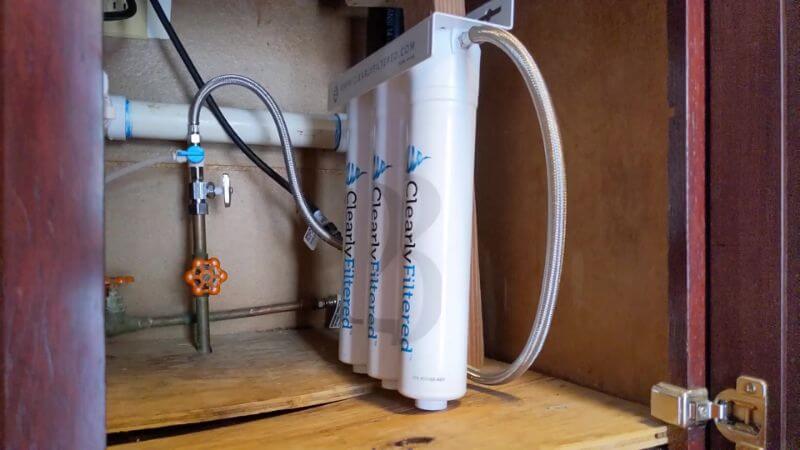
🔎 Does More Filter Stages Equal Better Filtration?
Manufacturers often try to one-up their competitors with additional filter stages – which is why it’s so common to see the more expensive filtration systems combining seven, eight, nine, or even ten separate filter stages*.
📌 Manufacturers want you to believe that the more filter stages, the better – but this isn’t necessarily true.
It’s worth reading the manufacturer’s marketing materials carefully. Some products claim to have eight or more filter stages, but when you read up on each stage, you might discover that two different filter stages are repeated – so there are only actually six stages in total.
You could argue that more filter stages give more opportunity for contaminants to be removed as water flows through the filtration system. This is true.
However, the number of filter stages alone doesn’t determine the quality of the filtered water. Other factors, such as the design and surface area of the filter, the water flow rate through the system, and the types of filter media included, are also factors affecting the filter’s performance.
For instance, you could think that a ten-stage filter sounds impressive, but if every single stage is activated carbon, it won’t equal more contaminant removal.
Luckily, most manufacturers draw the line at four filter cartridges, and to achieve this higher number of filter stages without the bulk of separate cartridges, they combine several media types in each cartridge.
Related: Is Starbucks water filtered?
📋 What To Consider When Deciding On Number of Filter Stages
When deciding on the number of filter stages in a water filter or reverse osmosis filter system, consider the following things:
Your Water Quality & Contaminant Removal Expectations
What does your tap water contain?
What do you want to remove?
Make sure you know these two things when deciding on the right number of water filter cartridges for you.
For instance, if you just want to remove chlorine from city water, a single-stage carbon block filter should be fine. But if you want to remove as many contaminants as possible, a system with multiple filters, like a reverse osmosis system, should be best.
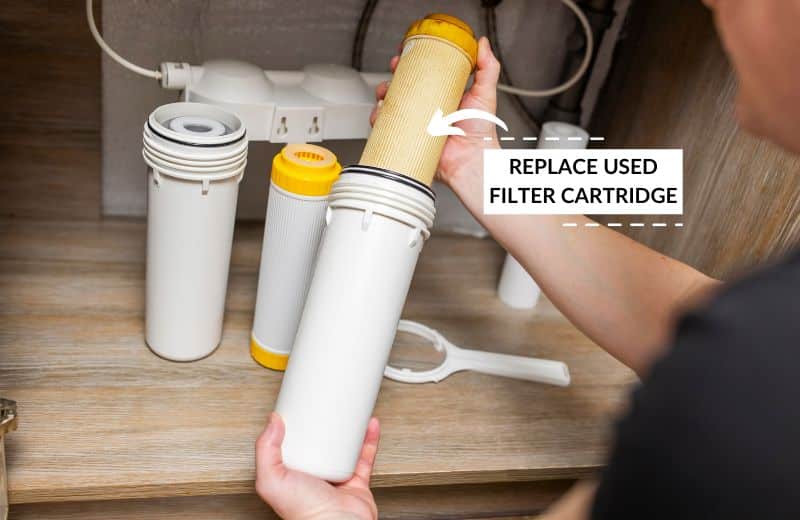
Your Installation & Maintenance Preferences
Generally, the more filter stages in a system, the more difficult the installation and the more filter changes you’ll need.
We say “generally” because some multi-stage systems combine multiple filter material types within the same cartridge. Go for this type of system if you want the easiest installation and the least frequent maintenance.
Each filter stage will typically have a different lifespan. For instance, in reverse osmosis systems, the sediment filter might last 6 months, while the reverse osmosis membrane lasts 2 years, and the carbon block filters last 9-12 months.
Your Available Space
Finally, consider your available space.
Multi-stage filters take up more room because of the additional space required by the extra filters.
💡 Multi-stage reverse osmosis systems take up the most space because they need a drain line, and tank-based systems also fill space with a water storage tank.
If your space at the installation location is limited, opt for a smaller filtration system with fewer filter stages.
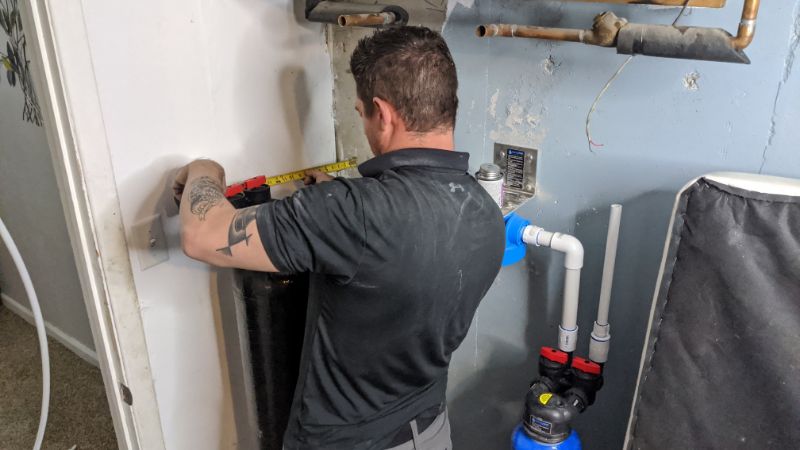
📖 What Are Some Good Filter Stages To Consider?
Sediment Filter
Sediment filter cartridges are typically the first stage of multi-stage water filter systems. These filters begin the filtration process by removing large particles of sand, silt, dirt, and other suspended solids.
A sediment filter protects the later filter stages in a water filter system, preventing early clogging of the media and extending their lifespan.
Carbon Filter
Carbon filters, such as carbon block filters and granular activated carbon filters, are another common filtration stage in a multi-stage water filter system. These filters use adsorption to pull contaminants like chlorine out of water.
You’ll typically find at least one carbon filter in a non-RO system, and two in a multi-stage reverse osmosis system: a second-stage carbon filter and a carbon polishing filter.
Carbon filters are often combined with other filter media, including KDF and ion exchange resin, to improve filtration and add a couple of extra filtration stages into a water filter system.
Reverse Osmosis Membrane
All multi-stage reverse osmosis systems have an essential filter stage: the semipermeable membrane.
The reverse osmosis membrane has tiny pores that block most contaminants larger than 0.0001 microns in tap water. This stage of the filtration process removes more contaminants than any other stage.
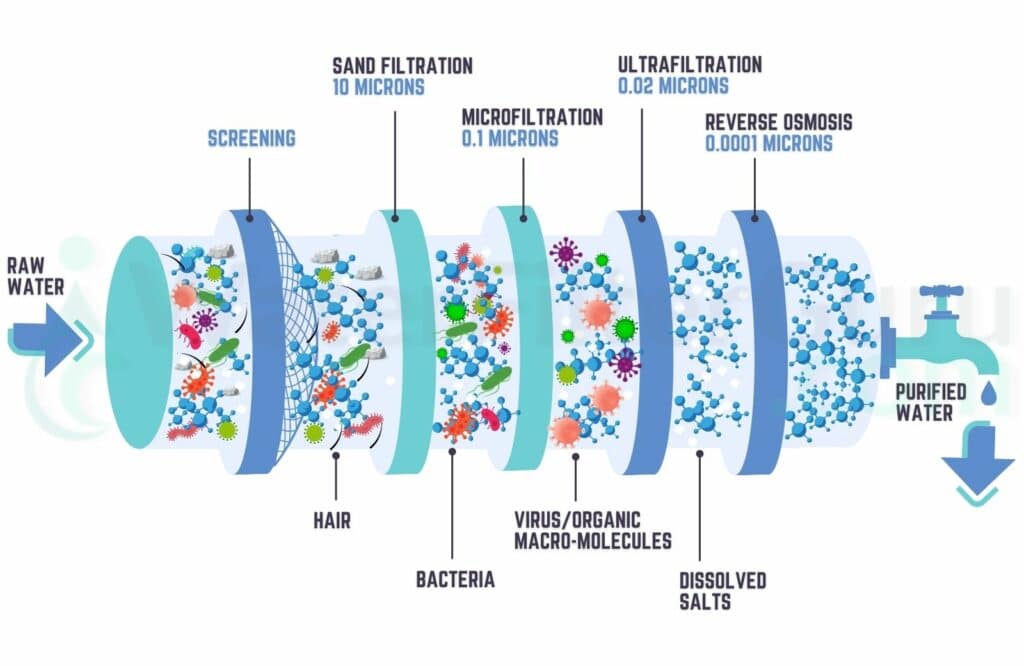
Ultrafiltration Membrane
Similarly to reverse osmosis, ultrafiltration uses membrane separation to remove hundreds of contaminants, this time bigger than 0.01 microns.
Ultrafiltration membranes are usually combined with other filter stages in multi-stage water filter systems. A UF filter should at least be protected by a sediment pre-filter stage.
UV Light
A UV light is a common add-on filter stage for whole house well water filtration systems. This type of post-filter sends water through a UV chamber, where it is treated with ultraviolet light.
The UV light scrambles the DNA of microorganisms like bacteria and viruses, preventing them from reproducing or making you sick when you drink the water.
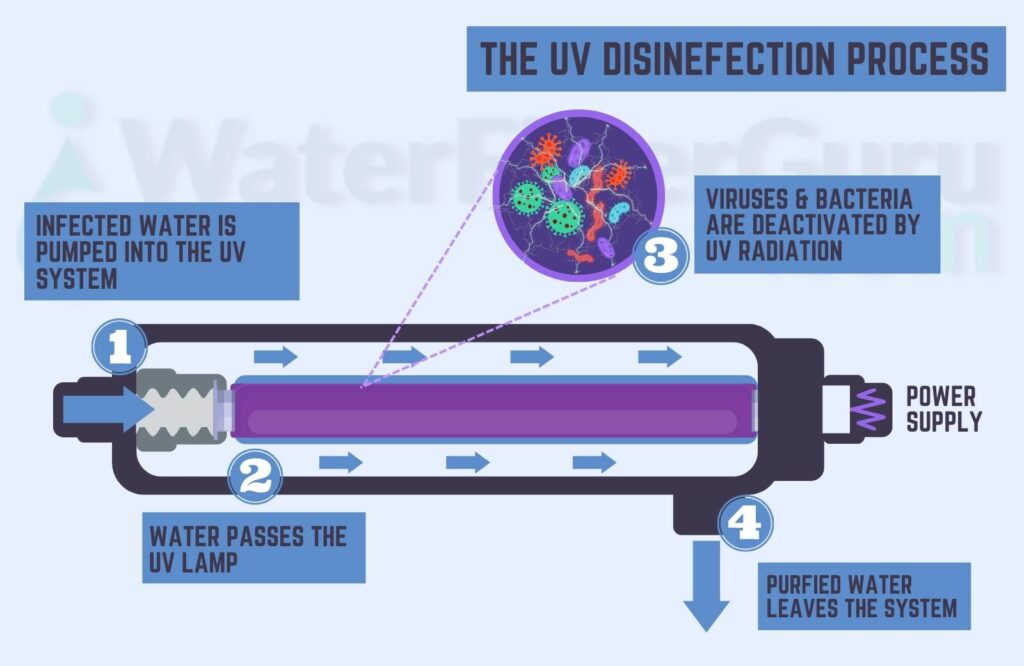
Remineralizing Filter
Finally, some reverse osmosis water filters come with an optional post filter stage: a remineralizing filter. A reverse osmosis system removes all organic and inorganic compounds from water, including healthy minerals.
The role of a remineralizing filter is to add trace amounts of healthy minerals back into water, improving its taste and health properties.
📝 Final Word
👨⚖️ How many stages of filtration you need depends on your contaminant removal expectations, your available space, and your installation and maintenance preferences.
More filter stages usually equals a better performance – but not always. Plus, remember that many types of filters (including tiny water pitcher filters) combine multiple filter stages within a single cartridge. So you don’t always have to buy numerous separate physical filter cartridges to enjoy thorough filtration.
Read up on each filter stage for a multi-stage water filter and decide whether or not it’s worth paying a bit more for the system based on your own preferences and needs.

